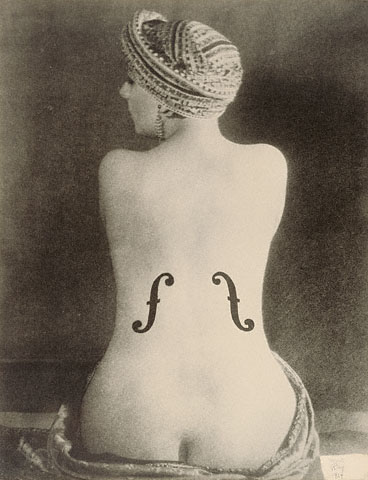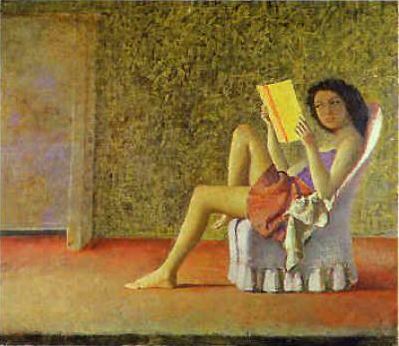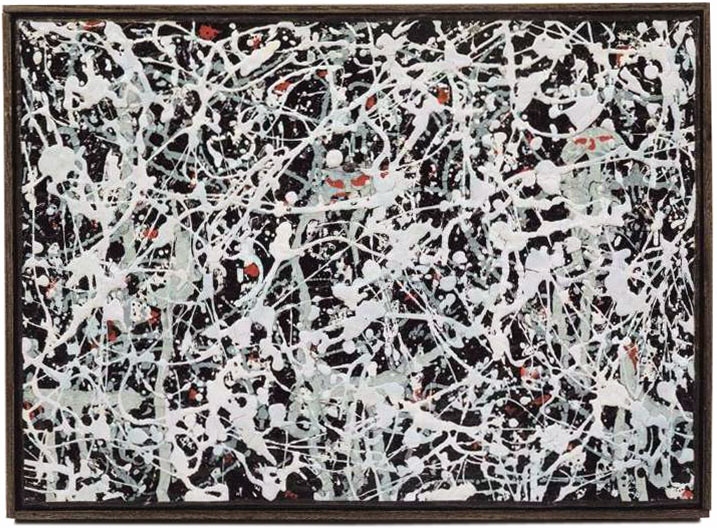Mercury
Επιφανές μέλος



Και η παρωδία απο το 9gag:

Σημείωση: Το μήνυμα αυτό γράφτηκε 13 χρόνια πριν. Ο συντάκτης του πιθανόν να έχει αλλάξει απόψεις έκτοτε.


Guido Cagnacci

Σημείωση: Το μήνυμα αυτό γράφτηκε 13 χρόνια πριν. Ο συντάκτης του πιθανόν να έχει αλλάξει απόψεις έκτοτε.


Σημείωση: Το μήνυμα αυτό γράφτηκε 13 χρόνια πριν. Ο συντάκτης του πιθανόν να έχει αλλάξει απόψεις έκτοτε.
Ciela
Πολύ δραστήριο μέλος


τι θελει να πει ο "ποιητης"?Allegoria della vita umana, c.1601-63
Guido Cagnacci


Σημείωση: Το μήνυμα αυτό γράφτηκε 13 χρόνια πριν. Ο συντάκτης του πιθανόν να έχει αλλάξει απόψεις έκτοτε.


Ρωτας για τον τιτλο και μονο αυτον,ή για ολοκληρο τον πινακα;τι θελει να πει ο "ποιητης"?
Σημείωση: Το μήνυμα αυτό γράφτηκε 13 χρόνια πριν. Ο συντάκτης του πιθανόν να έχει αλλάξει απόψεις έκτοτε.
Ciela
Πολύ δραστήριο μέλος


Σημείωση: Το μήνυμα αυτό γράφτηκε 13 χρόνια πριν. Ο συντάκτης του πιθανόν να έχει αλλάξει απόψεις έκτοτε.
Aeneas
Πολύ δραστήριο μέλος



Black Magic
Σημείωση: Το μήνυμα αυτό γράφτηκε 13 χρόνια πριν. Ο συντάκτης του πιθανόν να έχει αλλάξει απόψεις έκτοτε.


η σχεση του τιτλου με τον πινακα... οι ενδεχομενοι συμβολισμοι..
Ας το επιχειρησω.
Τα συμβολα ειναι τα εξης:
Κοπελα = Νιοτη
Κλεψυδρα = Χρονος
Λουλουδια = Ζωη
Νεκροκεφαλη = Θανατος
Και η συνοψη ολων αυτων βρισκεται στον Ουροβορο πανω απο το κεφαλι της
Κατα την ταπεινη γνωμη μου

Σημείωση: Το μήνυμα αυτό γράφτηκε 13 χρόνια πριν. Ο συντάκτης του πιθανόν να έχει αλλάξει απόψεις έκτοτε.
Mercury
Επιφανές μέλος


 ):
):Ουροβόρος Όφις
Ο ουροβόρος όφις ή απλά ουροβόρος λέγεται ο όφις (το φίδι) τη στιγμή που ελίσσεται γύρω από τον εαυτό του και δαγκώνει την ουρά του αφαιρώντας το υπόλοιπο παλαιού δέρματός του, δίνοντας έτσι την εντύπωση ότι τρώει την ουρά του. Η περίκλειστη αναπαράστασή του αποτελεί ένα αρχαίο σύμβολο της αιωνιότητας και της συνέχειας του κυκλικού χρόνου. Αποτελεί επίσης από τα πλέον διαδεδομένα μασονικά ή ακόμη και γνωστικά σύμβολα. Βέβαια αξίζει να σημειωθεί ότι ως σύμβολο υπάρχει πολύ πιο πριν εμφανιστεί ο Μασονισμός.
Τι αντιπροσωπεύει
Υπάρχουν πολλές εκδοχές για το τι ακριβώς αντιπροσωπεύει. Πολλοί πιστεύουν ότι αντιπροσωπεύει την δημιουργική ώθηση της νέας αρχής, αλλά και την σοφία. Κάποιοι το έχουν συνδέσει και με την ανανέωση και την αναγέννηση επειδή το φίδι έχει την δυνατότητα να αλλάζει δέρμα. Μια άλλη άποψη είναι ότι το κυκλικό του σχήμα υποδεικνύει την εκπνοή και την εισπνοή του Ινδού Βράχμα, του Κοσμικού Δημιουργού, του θεού της επέκτασης. Όταν ο Βράχμα εκπνέει οι κόσμοι εμφανίζονται, και αυτό συμβολίζεται με την κατερχόμενη φορά του σώματος του φιδιού, ενώ η ανερχόμενη φορά του συμβολίζει την άνοδο και επιστροφή των κόσμων προς το πνεύμα. Η σπειροειδής αυτή κίνηση είναι αιώνια και δείχνει την εξέλιξη της ζωής μέσω των κύκλων του χρόνου. Ο ίδιος ο κύκλος αντιπροσωπεύει την τελειότητα και την αποκατάσταση της συμπαντικής αρμονίας, καθώς επίσης και το Απεριόριστο, από το οποίο όλα προέρχονται και στο οποίο όλα επιστρέφουν.
Και ενδιαφέρον fact:Υπήρχε και στο παλιό χαρτονόμισμα των 500 δραχμών(για όσους τις πρόλαβαν)


Σημείωση: Το μήνυμα αυτό γράφτηκε 13 χρόνια πριν. Ο συντάκτης του πιθανόν να έχει αλλάξει απόψεις έκτοτε.
Rempeskes
Επιφανές μέλος


Μια άλλη άποψη είναι ότι το κυκλικό του σχήμα υποδεικνύει την εκπνοή και την εισπνοή του Ινδού Βράχμα,...
ποιός βράχμα και ποιός μπολλιγουντ ρε μαν.
την εποχή που ζωγράφιζε ο καλλιτέ, μία ήταν η ερμηνεία για τον ουροβόρο.
Η... Ερμηνευτική.
ναι, δεν τρολλάρω, λολ.
Ο ουροβόρος είχε κυρίαρχο ρόλο στην εξ αποκαλύψεως διδασκαλία του Ερμή Τρισμεγίστου, η οποία με τη σειρά της
ήταν ένα μείγμα Ελληνικών, Αιγυπτιακών, Ιρανικών και Σημιτικών δοξασιών (αν ξεχνάω κανέναν σχωράτε με, έχω πιεί λιγο), και αυτές οι επιρροές διαμόρφωσαν - σύμφωνα με μια άποψη - τον προχριστιανικό κόσμο στο βολικό του καλούπι για τον υιό της Παρθένου που θα αναστηθεί, κλπ κλπ...
λοιπόν ωραιο θέμα για συζήτηση.
νοτ
Σημείωση: Το μήνυμα αυτό γράφτηκε 13 χρόνια πριν. Ο συντάκτης του πιθανόν να έχει αλλάξει απόψεις έκτοτε.


Η ξενογλωσση βιβλιογραφια εμπεριεχει περισσοτερες πληροφοριες.
Go!
Σημείωση: Το μήνυμα αυτό γράφτηκε 13 χρόνια πριν. Ο συντάκτης του πιθανόν να έχει αλλάξει απόψεις έκτοτε.


Frida Kahlo

Σημείωση: Το μήνυμα αυτό γράφτηκε 13 χρόνια πριν. Ο συντάκτης του πιθανόν να έχει αλλάξει απόψεις έκτοτε.
Noisette
Περιβόητο μέλος



Σημείωση: Το μήνυμα αυτό γράφτηκε 13 χρόνια πριν. Ο συντάκτης του πιθανόν να έχει αλλάξει απόψεις έκτοτε.
Ηρώ
Διακεκριμένο μέλος



Louise Bourgeois
Αγαπημένη!
Σημείωση: Το μήνυμα αυτό γράφτηκε 13 χρόνια πριν. Ο συντάκτης του πιθανόν να έχει αλλάξει απόψεις έκτοτε.
Angelique.
Διακεκριμένο μέλος



Joseph Mallord William Turner ~ Fishermen at Sea.

La Mort de Marat or Marat Assassiné ~ Jacques-Louis David.
David is a wonder-worker. He's completely remade Marat--from man into myth. For starters, Marat is bathed in light, which lends an angelic, other-worldly quality to him. All traces of the red, oozing scabs that thickly covered his skin are gone, an instance of 18th century air-brushing. Though he was killed by multiple stab wounds, inflicted on him by a woman named Charlotte Corday, only one is visible. That one, vertical slash--it's reminiscent of the spear wound painters have always shown in the side of Christ. It barely drips.
In fact, it's a very peaceful painting, isn't it? You could be almost forgiven for not thinking him dead. The only hint at violence is Corday's knife, lingering at the bottom of the painting; David's made it ashamed of its role in the great man's murder. Look closer though. You'll see that Marat is bathing in blood--the tub is full of it. Where is it all coming from? Well, David wants it both ways: He wants Marat the clean, pure secular saint; he also wants you to know what the great man has sacrificed for the French people.
How powerful is this art? From 1795-1846, or over fifty years, it did not see the light of day. The French monarchy, restored after Napoleon's final defeat in 1815, furiously sought it out. It was the ultimate Revolutionary painting; they wanted to obliterate it. From 1815-1848, under the reigns of Louis XVIII, Charles X and Louis-Phillippe, the painting was not safe in France.
Finally, why was Marat murdered? Two quotes encapsulate the tale. Before being guillotined by the regime, Charlotte Corday cried out that she had "killed one man to save one hundred thousand." The paper Marat grasps in the painting was a fake list of traitors Corday had brought to Marat in order to get close to him. Before she stabbed him to death, Marat glanced at the list, signed his name, and told her, "They shall all be guillotined."
Σημείωση: Το μήνυμα αυτό γράφτηκε 13 χρόνια πριν. Ο συντάκτης του πιθανόν να έχει αλλάξει απόψεις έκτοτε.
Aeneas
Πολύ δραστήριο μέλος



Σημείωση: Το μήνυμα αυτό γράφτηκε 13 χρόνια πριν. Ο συντάκτης του πιθανόν να έχει αλλάξει απόψεις έκτοτε.
venividivici
Τιμώμενο Μέλος


πηγή
«Εφυγε» ο ΜπαλτίςΕνας από τους σημαντικότερους ζωγράφους του 20ού αιώνα, o 93χρονος Μπαλτίς, πέθανε στην Ελβετία, όπου ζούσε. Ο Μπαλτάσαρ Κλοσόφσκι ντε Ρόλα, όπως ήταν το πραγματικό του όνομα, ήταν ένας από τους ελάχιστους εν ζωή καλλιτέχνες που είδε έργα του να εκτίθενται στο Λούβρο. Γεννήθηκε στο Παρίσι το 1908 από Πολωνούς γονείς. Αυτοδίδακτος, ξεκίνησε να ζωγραφίζει στα δεκάξι του χρόνια. Στα πρώτα του βήματα κινήθηκε στην αναπαραστατική ζωγραφική, με κοφτή και ακριβή πινελιά. Μετά το Β' Παγκόσμιο Πόλεμο η σύνθεσή του έγινε πυκνότερη και με νέα θέματα (γυμνές γυναικείες και κοριτσίστικες φιγούρες).
Χαρακτηριστικά της ζωγραφικής του Μπαλτίς είναι η αυστηρότητα της σύνθεσης, η αργή εκτέλεση των έργων, η εμμονή του στο ρεαλισμό. Επίσης, ήταν γνωστή η αντίθεσή του στη ζωγραφική των περισσοτέρων συγχρόνων του, για τους οποίους έλεγε ότι τους λείπει η δεξιοτεχνία, και η επιμονή του στην άποψη ότι η ζωγραφική δεν πρέπει να αποτελεί αντικείμενο συζητήσεων, γιατί δε χωρά σε καμία γλώσσα.

πηγή
Μπ. Μπαλτίς, ο οικότροφος του Λούβρου
Ο γνωστός δημιουργός ήταν ένας ζωγράφος που ακολούθησε τον δρόμο των μεγάλων δασκάλωνΙσως δεν θα μπορούσε να πει κανείς για τον Μπαλτίς, ο οποίος πέθανε στις αρχές Μαρτίου στην ολύμπια ηλικία των 92 ετών στο σαλέ του στην Ελβετία, ότι ήταν ένας από τους μεγάλους ζωγράφους του 20ού αιώνα. Γνώριζε πολλούς από αυτούς και κινήθηκε στους ίδιους καλλιτεχνικούς κύκλους, δεν ήταν όμως του διαμετρήματος ενός Πικάσο, ενός Ματίς, ή έστω ενός Χουάν Μιρό, με τον οποίο υπήρξαν και στενοί φίλοι στο Παρίσι, Ηταν όμως καλός ζωγράφος, πολύ καλός μερικές φορές, αν και η μετέπειτα δουλειά του δεν έφτασε ποτέ στα επίπεδα της καλύτερης περιόδου του ανάμεσα στις δεκαετίες του '30 και του '50.
Αναμφίβολα πάντως υπήρξε η τελευταία διασημότης της παλιάς σχολής του Παρισιού. Δεν υπήρξε ποτέ το επίκεντρο, είχε όμως την ικανότητα να «αξιοποιεί» την περιθωριακή του θέση, έτσι ώστε αυτή να μοιάζει περισσότερο με αριστοκρατική αποστασιοποίηση.
Οπως είπε ο ίδιος σε έναν συγγραφέα κατά τη δεκαετία του '60, «ο Μπαλτίς είναι ένας ζωγράφος για τον οποίο δεν ξέρει κανείς τίποτα». Kαι πράγματι, έκανε ό,τι μπορούσε για να αφήσει πίσω του ψεύτικα ίχνη και να προκαλέσει σύγχυση στους βιογράφους του.
Στο... περιθώριο
Τα τελευταία χρόνια της ζωής του έζησε σε μια μεγαλοπρεπή έπαυλη στα περίχωρα του Γκστάαντ, μαζί με την πολύ νεότερή του Γιαπωνέζα σύζυγό του. Εμφανιζόταν ως «Kόμης ντε Ρολά», μία γενεαλογική μυθοπλασία. Ο πατέρας του, ο Ερικ Kλοσόφσκι, ήταν ζωγράφος και ιστορικός της τέχνης.
Η μητέρα του, η Ελιζαμπέτ Σπιρό, γνωστή ως Μπαλαντίν, ήταν ζωγράφος και την συνέδεε μακρά και ισχυρή φιλία με τον Ράινερ Μαρία Ρίλκε, ο οποίος έγινε μέντωρ του νεαρού Μπαλτίς. Ετσι, από τα παιδικά του χρόνια, ο Μπαλτάσαρ Kλοσόφσκι έζησε μέσα σε ένα καλλιτεχνικό περιβάλλον και του καλλιεργήθηκε η πεποίθηση ότι ήταν ένα παιδί-θαύμα. Αλλά ποτέ δεν φοίτησε κανονικά σε σχολή Kαλών Τεχνών: σπούδασε μόνος του και με πάθος τη ζωγραφική και έκανε πολλές αντιγραφές έργων τέχνης από μουσεία.
Η καθοριστική επίδραση που δέχθηκε όμως ήταν το έργο του Ιταλού ζωγράφου του 15ου αιώνα Πιέρο ντε λα Φραντσέσκα. Ο Μπαλτίς γνώρισε τον κύκλο τοιχογραφιών του ζωγράφου αυτού με τίτλο «Ο Θρύλος του Αληθινού Σταυρού», σε ένα ταξίδι του στην Ιταλία το 1926. Ο μοναδικός τρόπος με τον οποίο ο Πιέρο ντε λα Φραντσέσκα συνδύαζε τη σωματική ένταση των ανθρώπινων μορφών με το περίπλοκο, αφηρημένο στυλιζάρισμα, φαίνεται ότι διαμόρφωσε τις βαθύτερες εικαστικές φιλοδοξίες του Μπαλτίς.
Αλλά το στοιχείο του διφορούμενου πόθου με το οποίο εμπότιζε τις εικόνες των γυμνών γυμνών του αποτελεί αποκλειστική ιδιοτυπία της δουλειάς του και χάρη σ' αυτό, κυριαρχούσε πάντα μία γεύση σκανδαλώδους ερωτισμού στα έργα του.
Τα γυμνά
Από τη δεκαετία του '50 και μετά, έγινε πλέον συνήθεια να τον παραλληλίζουν με τον Βλαντίμιρ Ναμπόκοφ, επειδή τον γοήτευε και αυτόν η αθώα σεξουαλικότητα των μικρών κοριτσιών. Πόσες φορές δεν έχουμε ακούσει να αποκαλούνται «νυμφίδια» ή «λολίτες» οι νεαρές κοπέλες στην ήβη τους που απεικονίζονται στα έργα του μισόγυμνες σε άδεια δωμάτια ή ξαπλωμένες σαν γάτες μπροστά σε αναμμένα τζάκια.
Ο Μπαλτίς ισχυριζόταν ότι στα γυμνά του δεν υπήρχε το στοιχείο της σεξουαλικής πρόκλησης και ότι ήταν απλώς ένας συνδυασμός μορφής και χρώματος που αποκάλυπτε έτσι μερικές πολύ οικείες πτυχές της ανθρώπινης ζωής. Δεν έπειθε όμως πολλούς.
Τα εσωτερικά του Μπαλτίς δίνουν μία αίσθηση παγωνιάς και σκηνοθετημένης διαστροφής, όπως φαίνεται ολοκάθαρα από το έργο του «Το Δωμάτιο» (1952-54), όπου μια νεαρή κοπέλα είναι ξαπλωμένη αμέριμνα σε μια καρέκλα, ενώ την πλημμυρίζει το φως που μπαίνει από ένα τεράστιο παράθυρο με βαριές κουρτίνες που τις τραβάει ένας μοχθηρός νάνος.
Ο Μπαλτίς δεν είχε τη φιλοδοξία να υποτάξει το ταλέντο του στις επιταγές της αβάν γκαρντ. Υπήρξε καθαρά εικονικός ζωγράφος, χωρίς καμία ενδιάμεση αφηρημένη φάση στη ζωγραφική του.
Ο σεβασμός του στους παλιούς μετρ, από τον Πιέρο ντε λα Φραντσέσκα και τον Πουσέν ώς τον Kουρμπέ και τον Μανέ, ήταν τόσο απόλυτος, ώστε η δουλειά του είναι μια σχεδόν αδιάλειπτη απότιση φόρου τιμής σ' εκείνους, όχι τόσο όσον αφορά τη θεματολογία, όσο τις προσεκτικά μελετημένες στάσεις και τις δομές, τις οποίες μεταφέρει στα έργα του έπειτα από διεξοδικό στοχασμό.
ΕυαισθησίαΗ ικανότητά του να οργανώνει τις συνθέσεις του ήταν καταπληκτική. Το εύρος των στοιχείων που ήταν ικανός να ενσωματώσει τεράστιο. Αλλά αυτό που έκανε τις μεμονωμένες αναφορές του να εναρμονίζονται μεταξύ τους, ήταν η απέραντη ευαισθησία του για τη φύση. Πουθενά αλλού δεν φαίνεται αυτό με μεγαλύτερη σαφήνεια απ' ό,τι στην τεράστια σύνθεσή του του 1937, με τίτλο «Το Ορος».
Kάθε ένα από τα πρόσωπα που απεικονίζονται στο οροπέδιο αυτό της Βέρνης είναι και ένα ενσωματωμένο στοιχείο -το κορίτσι που είναι ξαπλωμένο στο πρώτο πλάνο του πίνακα προέρχεται από τον Πουσέν και ούτω καθεξής.
Οι βράχοι, με το πράσινο επίχρισμα που τους καλύπτει, είναι πραγματικοί, είναι όμως ταυτόχρονα εμπνευσμένοι από τα τοπία του Kουρμπέ. Αλλά αυτό που πραγματικά εκτοξεύει τον πίνακα, είναι το απαλό, ευδαιμονικό, χρυσαφί φως το οποίο λούζει κάθε περίπλοκο σχήμα σε μια διαυγή ατμόσφαιρα και αυτό είναι στοιχείο που ανήκει καθαρά στον Μπαλτίς. Αλλωστε ο ίδιος δεν έκρυβε τις πηγές έμπνευσής του. Δεν είχε αναστολές να ομολογήσει ότι ήταν παιδί των μουσείων, ένα έκθετο που μεγάλωσε, θα 'λεγε κανείς, σαν οικότροφος μεσα στο Λούβρο.

Balthasar Klossowski de Rola


Σημείωση: Το μήνυμα αυτό γράφτηκε 13 χρόνια πριν. Ο συντάκτης του πιθανόν να έχει αλλάξει απόψεις έκτοτε.
Noisette
Περιβόητο μέλος




Δεν ξέρω τι λέτε, τον αγαπώ και θα αγαπώ πάντα τα έργα του!

Σημείωση: Το μήνυμα αυτό γράφτηκε 13 χρόνια πριν. Ο συντάκτης του πιθανόν να έχει αλλάξει απόψεις έκτοτε.
Noisette
Περιβόητο μέλος



La Guernica- Picasso

La Buerlinica- Stephan Cacciatore (Berlin)
Σημείωση: Το μήνυμα αυτό γράφτηκε 13 χρόνια πριν. Ο συντάκτης του πιθανόν να έχει αλλάξει απόψεις έκτοτε.


Σημείωση: Το μήνυμα αυτό γράφτηκε 13 χρόνια πριν. Ο συντάκτης του πιθανόν να έχει αλλάξει απόψεις έκτοτε.
Χρήστες Βρείτε παρόμοια
-
Τα παρακάτω 0 μέλη και 2 επισκέπτες διαβάζουν μαζί με εσάς αυτό το θέμα:Tα παρακάτω 89 μέλη διάβασαν αυτό το θέμα:
- American Economist
- Joji
- jellojina
- chester20080
- Alma Libre
- Scandal
- Memetchi
- Melina.
- charmander
- giannhs2001
- CiNeFiL
- hirasawayui
- Unboxholics
- snowy
- Samuel
- harry akritas
- Libertus
- jj!
- Nikolas77
- Μάρκος Βασίλης
- Χαρουβιάν
- SlimShady
- tsiobieman
- orchidea
- T C
- taketrance
- Viedo
- Έμμα
- fmarulezkd
- VforVendetta
- Βλα
- louminis
- D.a.i.s.y
-
Φορτώνει...
-
Το forum μας χρησιμοποιεί cookies για να βελτιστοποιήσει την εμπειρία σας.
Συνεχίζοντας την περιήγησή σας, συναινείτε στη χρήση cookies στον περιηγητή σας.
 Αρχική Forum
Αρχική Forum
 Νέα Δημοσίευση
Νέα Δημοσίευση
 Προσωπικές Συζητήσεις
Προσωπικές Συζητήσεις
 Πολυμέσα - Gallery
Πολυμέσα - Gallery
 Συνδεδεμένοι Χρήστες
Συνδεδεμένοι Χρήστες
 Λίστα Αποκλεισμένων
Λίστα Αποκλεισμένων
 Υπεύθυνοι του Forum
Υπεύθυνοι του Forum
 e-steki
e-steki iSchool
iSchool




